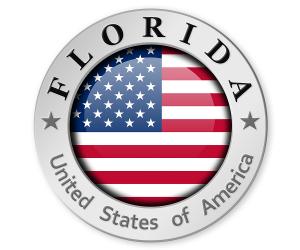Discover the Fortified Foods Market intricacies through detailed segmentation by raw materials, micronutrients, applications, technology, sales channels, and regions. Gain strategic insights into global preferences, from North America to Asia. Perfect for businesses and researchers navigating this dynamic industry
New York, Jan. 26, 2024 (GLOBE NEWSWIRE) — The global Fortified Foods market is projected to grow at a CAGR of 7.3%, increasing from US$ 160.8 billion in 2023 to US$ 263.3 billion by the end of 2030.
The Fortified Foods Market encompasses the production, distribution, and consumption of food products enhanced with additional nutrients to fulfill specific nutritional requirements. Typically, fortification involves adding vitamins, minerals, proteins, or other bioactive compounds to augment the nutritional value of the food. Commonly fortified items include cereals, dairy products, beverages, and baked goods. This market caters to the increasing consumer demand for convenient and nutritionally enriched food choices, especially among those aiming for a balanced and health-conscious diet. Fortified foods play a crucial role in addressing micronutrient deficiencies and promoting overall well-being, making them a significant segment within the broader food and beverage industry.
The growth of the Fortified Foods Market can be attributed to rising consumer awareness about the significance of nutrition and an increasing emphasis on preventive healthcare. Fortified foods provide a convenient and effective solution to address specific nutritional gaps and promote overall health. The demand for foods enriched with vitamins, minerals, and essential nutrients is driven by a combination of growing health consciousness and busy lifestyles.
Government initiatives aimed at combating malnutrition and endorsing fortified foods also contribute to the expansion of the market. The ongoing trend of personalized nutrition and the introduction of innovative fortification techniques further drive the growth of the Fortified Foods Market, meeting the consumer demand for functional and health-enhancing food options.
Empower Your Strategy with Insights: Request a PDF sample of the latest market report – https://www.persistencemarketresearch.com/samples/33929
Market Scope:
| Report Coverage | Details | |
| Market Revenue 2023 | US$ 160.8 Bn | |
| Estimated Revenue 2030 | US$ 263.3 Bn | |
| Growth Rate – CAGR | 7.3% | |
| Forecast Period | 2023 to 2030 | |
| No. of Pages | 238 Pages | |
| Market Segmentation |
|
|
| Regions Covered |
|
|
| Key Companies Profiled |
|
|
Top 8 Key Trends in the Fortified Foods Market:
- Rising Consumer Awareness and Focus on Preventive Healthcare: Increasing awareness among consumers about the importance of nutrition and a growing focus on preventive healthcare are driving the demand for fortified foods.
- Convenience and Effectiveness of Fortified Foods: Fortified foods offer a convenient and effective way to address specific nutritional deficiencies, attracting consumers seeking efficient solutions for their health and wellness.
- Demand Driven by Health Consciousness and Busy Lifestyles: The rising trend of health consciousness, coupled with busy lifestyles, is fueling the demand for foods enriched with vitamins, minerals, and other essential nutrients.
- Government Initiatives to Combat Malnutrition: Government initiatives aimed at combating malnutrition and promoting the consumption of fortified foods contribute significantly to the expansion of the Fortified Foods Market.
- Global Market Expansion and Increasing Adoption: The global Fortified Foods market is forecasted to expand at a Compound Annual Growth Rate (CAGR) of 7.3%, reflecting the increasing adoption of fortified food products worldwide.
- Personalized Nutrition Trend: The ongoing trend of personalized nutrition is influencing the Fortified Foods Market, with consumers seeking tailor-made solutions that meet their specific health and nutritional needs.
- Innovative Fortification Techniques: The development of innovative fortification techniques is driving market growth, as consumers look for functional and health-enhancing food options beyond traditional fortification methods.
- Diversification of Fortified Food Product Offerings: Manufacturers are diversifying their fortified food product offerings to cater to a wide range of preferences, creating a variety of enriched options in categories such as cereals, dairy products, beverages, and baked goods.
In a nutshell, the Persistence Market Research report is a must-read for start-ups, industry players, investors, researchers, consultants, business strategists, and all those who are looking to understand this industry. Get a glance at the report at – https://www.persistencemarketresearch.com/market-research/fortified-foods-market.asp
Market Growth Drivers for Fortified Foods
Rising Health Awareness: Increasing health-consciousness among consumers drives the demand for Fortified Foods, meeting the preference for nutritionally enriched options that support overall well-being. Fortified foods offer a convenient solution to bridge nutritional gaps, aligning with heightened health awareness globally.
Growing Aging Population: The shift towards an older demographic fuels the Fortified Foods Market, with fortified products addressing the specific nutritional needs of the elderly. These foods play a vital role in supporting healthy aging and managing age-related health concerns, catering to the nutritional requirements of an aging population.
Market Restraints for Fortified Foods
Consumer Perception Challenges: Consumer perception significantly influences the Fortified Foods Market. Success hinges on how consumers view the efficacy, safety, and desirability of fortified products. Positive perceptions, driven by nutritional awareness, can boost demand, but negative perceptions, like concerns about synthetic additives, may lead to hesitancy. Clear communication, education, and alignment with consumer preferences are vital for market acceptance.
Taste and Texture Issues: Taste and texture pose challenges for fortified foods. Incorporating essential nutrients can alter these qualities, potentially dissatisfying consumers. Balancing nutritional benefits with sensory appeal is crucial. Overcoming taste and texture challenges requires innovative formulation techniques, ensuring that fortified foods are not only nutritious but also enjoyable, enhancing market acceptance.
Opportunities in the Fortified Foods Market
Innovation in Product Formulations: Innovation in product formulations presents a significant opportunity for the Fortified Foods Market. Ongoing advancements in fortification techniques and creative product development allow for the creation of unique, appealing, and functional fortified food products. Manufacturers can differentiate themselves by offering innovative and well-formulated products, attracting health-conscious consumers and capitalizing on the growing interest in functional foods.
Educational Initiatives: Educational initiatives represent a significant opportunity for the Fortified Foods Market. Raising awareness about the nutritional benefits of fortified foods through educational campaigns can positively influence consumer perceptions and behaviors. By promoting nutritional literacy and emphasizing the importance of specific nutrients, the industry can cultivate a favorable environment for fortified foods, fostering consumer trust and driving market growth.
Top 10 Key Players:
- Nestle S.A.: A multinational food and beverage company, Nestle offers a wide range of fortified food products, including cereals, dairy products, and beverages.
- General Mills, Inc.: Known for its diverse portfolio of food products, General Mills produces fortified cereals, snacks, and other consumer goods.
- Kellogg Company: Kellogg is a major player in the production of breakfast foods, including a variety of fortified cereals.
- Unilever N.V.: Unilever is a global consumer goods company that manufactures a range of fortified food products, including spreads, soups, and beverages.
- PepsiCo, Inc.: Besides its prominence in the beverage industry, PepsiCo produces a variety of snacks and breakfast products that may include fortification.
- Abbott Laboratories: Known for its healthcare and nutrition products, Abbott produces a range of fortified nutritional supplements and infant formula.
- Danone S.A.: A multinational food-products corporation, Danone is involved in the production of dairy products, beverages, and baby foods with a focus on health and nutrition.
- Mars, Incorporated: Mars is a global confectionery, pet care, and food conglomerate that may include fortified products within its diverse portfolio.
- The Kraft Heinz Company: Known for its food and beverage offerings, Kraft Heinz produces various products that may include fortified options.
- Hershey Company: While primarily known for confectionery, Hershey also manufactures snacks and other food products, and some of them may have fortification.
Top Regional Markets for Fortified Foods
North America:
Factors Driving Dominance: North America likely holds the largest market share in the Fortified Foods Market. This is attributed to high consumer awareness and acceptance of fortified products, robust regulatory frameworks, and a culture of convenience. The region’s busy lifestyle and the presence of major food industry players contribute to the widespread availability and adoption of fortified foods.
Asia Pacific:
Factors Fueling Growth: The Asia Pacific region is experiencing the highest Compound Annual Growth Rate (CAGR) in the Fortified Foods Market. Factors contributing to this growth include a rising population, increasing urbanization, and a growing middle-class demographic. Government initiatives to combat malnutrition, changing lifestyles, and an expanding retail infrastructure are driving the demand for convenient and nutritionally enriched food options in the region.
Emerging Trends and Dynamics in the Fortified Foods Market: A Comprehensive Analyst Viewpoint
The fortified foods market is thriving, fueled by growing consumer awareness of nutritional deficiencies and a heightened focus on preventive healthcare. Rising demand for functional and health-enhancing products, particularly those enriched with vital nutrients, is driving substantial market traction. Ongoing innovations in food technology, advanced fortification techniques, and enhanced bioavailability contribute significantly to market growth. The aging population’s increased interest in products promoting bone health, immunity, and overall well-being further propels expansion.
Collaborative efforts between food manufacturers and healthcare professionals drive product development and customization, shaping a dynamic landscape for fortified foods. On the supply side, the market faces dynamic demand-supply dynamics influenced by shifting consumer preferences, challenging suppliers to maintain robust production capacities. Pricing structures, influenced by production costs and regulatory compliance, prioritize value for health benefits. Long-term growth hinges on the affordability of fortified foods and continuous innovation. The competitive landscape emphasizes trends like personalized nutrition, clean label offerings, and sustainable sourcing, requiring collaboration across the supply chain for efficient management, supporting market growth and meeting consumer demands for accessible and nutritious fortified foods.
About Persistence Market Research:
Business intelligence is the foundation of every business model employed by Persistence Market Research. Multi-dimensional sources are being put to work, which include big data, customer experience analytics, and real-time data collection. Thus, working on “micros” by Persistence Market Research helps companies overcome their “macro” business challenges.
Persistence Market Research is always way ahead of its time. In other words, it tables market solutions by stepping into the companies’/clients’ shoes much before they themselves have a sneak pick into the market. The pro-active approach followed by experts at Persistence Market Research helps companies/clients lay their hands on techno-commercial insights beforehand, so that the subsequent course of action could be simplified on their part.
Contact:
Persistence Market Research
Teerth Technospace, Unit B-704
Survey Number – 103, Baner
Mumbai Bangalore Highway
Pune 411045 India
Email: [email protected]
Web: https://www.persistencemarketresearch.com

![]()
Originally published at https://www.einpresswire.com/article/684008814/fortified-foods-market-size-worth-us-263-3-billion-by-2030-persistence-market-research


